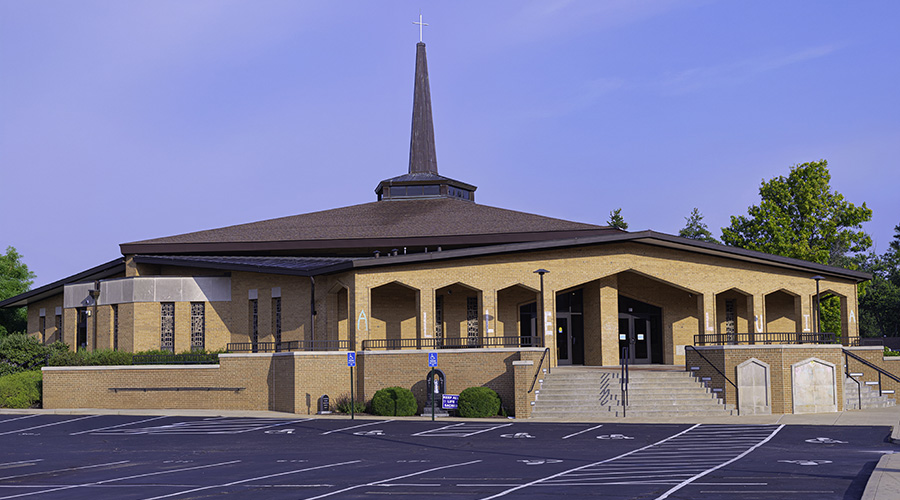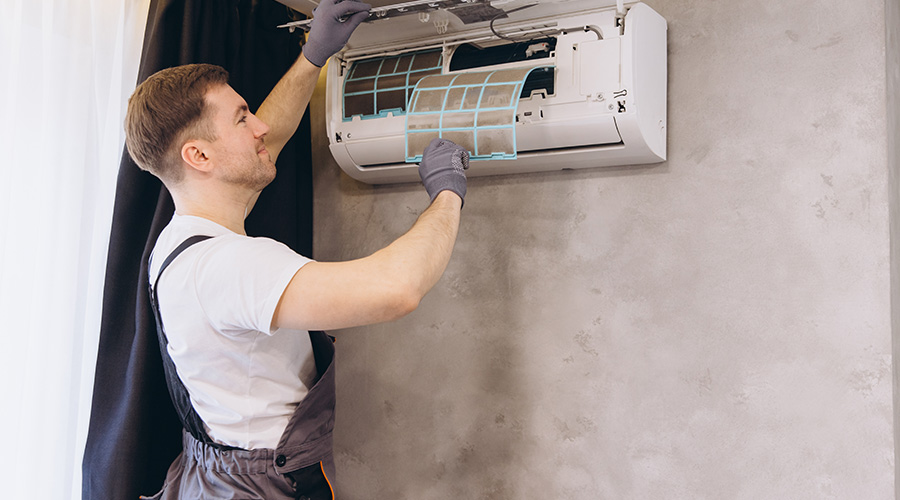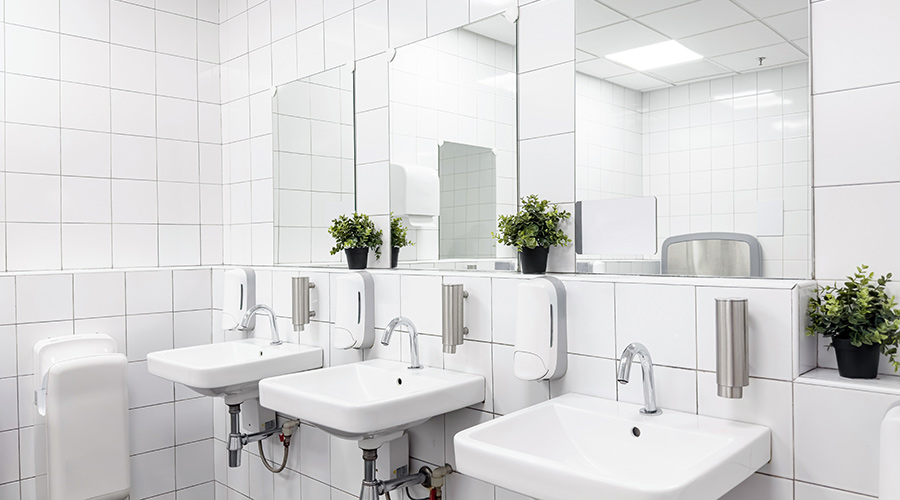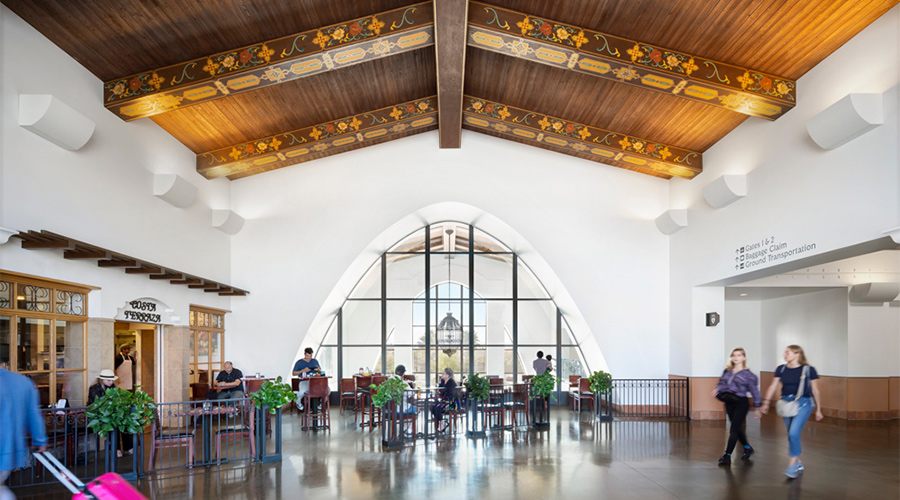
St. Paul Catholic Church Future-Proofs Comfort with Energy-Efficient HVAC Overhaul
Facing aging equipment and the risk of failure, the church installed a high-efficiency, low-refrigerant chiller system that cuts energy use and avoids service disruptions. August 6, 2025
A legacy HVAC system that continues to provide a comfortable indoor air environment has its advantages, allowing building owners to delay the cost of investing in a new one until the time is right. But it’s also risky, as a sudden failure can be highly disruptive to the occupants.
This was the scenario facing the building committee at St. Paul Catholic Church in St. Louis. The building was constructed in 1983 and still had the original HVAC equipment, but church leaders had concerns -- not only was the 40-year-old system inefficient compared to today’s standards, but it also required the use of an old refrigerant that was costly due to its ozone-damaging properties.
In addition, more than 1,100 people attend several services on a typical Sunday morning, and dozens more attend daily mass or utilize the lower-level space for events such as funeral luncheons, scout meetings, clubs and prayer groups. A lack of air conditioning or heating, even for a day or two, could impact hundreds of people.
“If you wait for the system to go kaput, you’re really in a bind because suddenly you have no heating and cooling and there will be a delay in getting new equipment installed,” says Tom Gresham, business manager at St. Paul Catholic Church.
As the system was approaching the end of its useful life, the risk of failure was growing every year. It was time to replace the system, Gresham says.
In 2024, Gresham got the blessing of parish leaders to pursue bids to replace the HVAC system. He reached out to five different companies that handle commercial HVAC installations. The church building committee compared the bids and reached a consensus that a system proposed by Integrated Facility Services (IFS) was the right choice.
“IFS was the only firm to offer a two-zone chiller system. This newer technology wasn’t even available two years ago in the large size that we needed,” Gresham says.
He adds that the building committee was impressed with the savings it offers, the energy efficiency it provides, and that it’s an eco-friendlier choice because of the chilled water system versus refrigerant-based. The pricing from IFS was competitive, and the future savings in utility costs was a bonus.
“They offered something more progressive and more efficient, so from a financial perspective it made sense,” he says.
IFS also assisted the church in qualifying for a $12,000 grant from Ameren Missouri, the local utility, for investing in efficient equipment.
“They handled all the paperwork for us. I just had to do the easy stuff, completing prefilled forms,” Gresham says. “This was a nice add-on, a ‘plus’ that we didn’t expect.”
Heat Pump and Chiller Solution Doubles the Energy Efficiency
Kurt Voss, Vice President of Engineering at IFS, said St. Paul now has an HVAC system that is 200 to 400 percent more efficient than the old equipment.
“The previous air handling units were fully electric heat, but our solution was to specify an inverter scroll chiller that uses heat pump technology to heat water, producing heat at three to four times greater efficiency. This is helping reduce the energy consumption significantly,” he says.
IFS also recommended changing from a fully refrigerant-based system to one that uses only a small amount of refrigerant, instead relying mainly on chilled water. This delivers a more environmentally safe and cost-effective cooling source, says Jared Harrison, project engineer at IFS.
Refrigerants are known to affect the environment when released into the atmosphere and over time have been updated to newer lower global warming potential (GWP) alternatives. Harrison says that when a refrigerant leaks from a system, more has to be added, which is costly. If water leaks, the cost of adding more water is negligent.
“This design will help the church keep maintenance costs down in the future, plus save on their utility bills. Ultimately that’s how we see our role: finding solutions that will make a difference for clients,” Harrison says.
He adds that the focus at IFS is listening to customers and educating them on their options.
“Anyone can go in and replace equipment. We go in and ask questions. ‘What do you want to achieve? What concerns do you have? Let’s make sure it’s the right thing.’ The customer doesn’t necessarily know what’s possible, and they come to realize there are alternatives,” Harrison says.
Minimizing Disruption During Installation
Scheduling a major installation requires careful planning and organization, especially when it’s necessary to avoid interrupting events and work schedules at a facility.
“IFS was great to work with, as far as communications, scheduling and the timing. Their crews were very respectful of what we had going on including funerals, which are often planned with only 48 hours’ notice,” Gresham says.
IFS began demolition before Christmas, earlier than what was originally scheduled, to limit the time the church would be without heat. They replaced the main church unit first, turned on the heat, and then began working on the secondary unit for the lower level.
“We had no hiccups. Everything went on schedule, as planned,” Gresham says. “There was no disruption to church operations at all which was really impressive. We were ecstatic that we didn’t have to relocate mass to the school gym, which was definitely a concern.”
St. Paul Catholic Church now has the peace of mind that a new HVAC system brings and is benefitting from greater energy efficiency and lower maintenance costs to replace expensive, outdated refrigerants.
Next
Read next on FacilitiesNet












